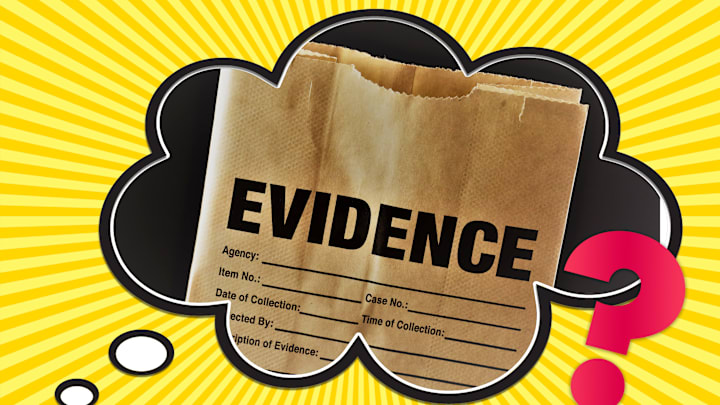If you’re a fan of Law & Order or Dateline, you can probably picture a typical crime scene with your eyes closed: A busy street corner closed off with yellow tape on a rainy day. Police officers with walkie-talkies telling curious bystanders to step back. Finally, a detective squatting over the chalk outline of a person while their assistant collects evidence inside a brown paper bag.
That last detail isn’t fabricated specifically for movies and TV shows. A lot of evidence from real-life crime scenes does end up being stored inside the same type of container otherwise used to carry home-made lunches or consume alcohol in public. But just because something is common, doesn’t mean it’s self-explanatory: why are critical clues, which have the power to make or break a case, collected in such flimsy receptacles?
Mold Is the Motive
While brown paper bags are an iconic part of criminal investigations, they’re not the only type of bag used in the field. According to law enforcement agency protocols, each type of evidence has to be stored in a container whose material is best suited for the preservation and handling of said evidence.
You May Also Like:
Add Mental Floss as a preferred news source!
Paper bags and boxes store biological evidence such as hair, blood, saliva, semen, or fecal material. This is because paper, unlike plastic, is porous, allowing air to circulate even when the bag is closed. If a detective were to place a blood-stained tissue inside an airtight plastic container, the moisture would have nowhere to evaporate. Depending on how long the container is stored, the tissue could grow mold, which could break down the DNA in the blood cells and potentially jeopardize the entire investigation as a result.
That explains the material, but what about the color? Most sources, including government websites and agency handbooks, don’t mandate a color for the bags, but there is a reason they’re usually brown. Generally speaking, brown paper bags are not as chemically processed as white paper bags, which are bleached and coated with additives that might react with and compromise the biological material stored inside them. Using brown paper bags avoids that risk.
Paper vs. Plastic
What if the evidence isn’t organic? Plastic containers are often used to store electronics or tools, for example. Their translucence also makes them well-suited to store objects that can be dangerous if handled incorrectly, such as firearms. Evidence that’s been burned, like a piece of singed carpet, is placed inside special fire debris bags that are made from nylon 11, a synthetic plastic that helps preserve chemicals like gasoline, kerosene, or paint thinner, the presence of which could explain how the flames were started.

Narcotics are placed inside so-called drug evidence bags with tamper-evident seals, so you can see if anyone tried to access the contents. Checks, receipts, and passports end up in currency and document bags, which are different from drug bags in name only.
Procedures and Protocols
Of course, storing evidence is only half the work. The other half is collecting, and there are protocols and practices for this process, too. The standard operating procedure of the Santa Barbara County Sheriff’s Office Forensic Unit, for instance, stipulates that officers use a clean pair of gloves for every piece of biological evidence they handle so as to avoid contamination [PDF]. The procedure also mentions that biological evidence should, where possible, be allowed to air-dry before being stored inside brown paper bags. If not, the air-drying will have to wait until it’s back at the lab.
Other tools in a forensic collector’s “murder bag” include sterile swabs, manila envelopes, scissors or razor blades, forceps, and masks to protect investigators and prevent contamination.
While using brown paper bags might seem low-tech, this simple method for evidence storage is actually pretty sophisticated.
